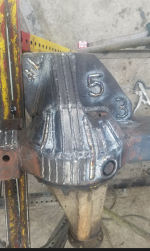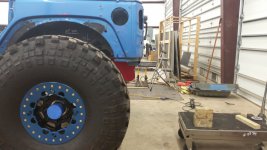Hyde
Andgoseek
My Jeep is kind of fat I'm guessing (probably 5k-ish pounds, haven't weighed it) and I did the skids with 1/4" aluminum and 1/2" UHMW. So far so good. Prior car was about 4500 pounds, had 1/8 and 3/16 steel with 3/8 UHMW over that, and it wasn't enough to keep from deflecting skidplates.
Supported or unsupported and what's the span? Trying to figure out what I'm going to use for mine, roughly 36"x36" belly



 It looked like it snowed inside the shop. Now I know why I don't do woodwork. 5mins with the router and 45 with the shop vac.
It looked like it snowed inside the shop. Now I know why I don't do woodwork. 5mins with the router and 45 with the shop vac.